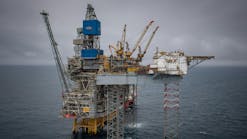R. Patrick Thompson
New York Mercantile Exchange
New York
The 1980s has been a decade of learning and growth for the members of the energy futures industry. As the New York Mercantile Exchange introduced new contracts, the energy industry gradually came to understand the value of futures trading to any business plan, especially during turbulent times in the mid-1980s.
The result: explosive growth in the latter half of the decade.
As a new decade begins, new challenges are unfolding. Increased liberalization and deregulation of the energy market are trends both at home and abroad. And there is increased demand for energy while environmental pressures mount and U.S. production declines. Future production and exports of the energy-rich Soviet Union and consumption patterns of the Eastern Bloc countries are uncertain.
And, increased dependence on OPEC supply is likely.
Thus, Nymex spent 1989 preparing for the future: readying a new natural gas contract, testing electronic trading systems to expand market access, and adapting its contracts to evolving market conditions. And the energy industry continued to utilize Nymex's risk-management instruments.
NATURAL GAS CONTRACT
Preparation for a natural gas futures contract was finalized in 1989. After selecting the Sabine Pipeline Co.'s Henry Hub as the contract's delivery mechanism, the Exchange filed its proposal for Commodity Futures Trading Commission (CFTC) approval.
Once approval is granted, Nymex will establish a formal launch date.
An actively traded futures contract will enable the natural gas industry to hedge price risk, lock in target profit margins, determine a real-market price, and enhance flexibility and performance of cash market operations.
Deregulation, environmental pressures, a shrinking supply bubble, and development of gas as an alternative fuel have been among the most significant factors that characterized the natural gas market during much of the late 1980s. The newly competitive natural gas industry is ripe for a futures contract for the 1990s and beyond.
Nymex also commenced trading in residual fuel oil futures in late 1989. Because resid and natural gas are frequently substitutable, futures contracts for both will provide the unique opportunity for BTU spread trading.
FOREIGN PARTICIPATION
Foreign participation in Nymex markets continues to be strong.
Evaluation of the energy complex reveals that about one third of Nymex customers are foreign firms.
Deregulation in the Far Eastern and European energy and financial markets has opened the door for further foreign participation in the future. Markets characterized by price risk and industries free to seek out the most effective risk management strategies will generate increased futures and options trading on into the next decade.
The Exchange will facilitate enhanced foreign participation in its markets through the development of electronic trading beyond traditional hours. Nymex has been researching, testing, and designing systems,
In late 1989, the Exchange conducted a trial with the International Commodities Clearing House ATS/2 electronic trading system already in use at exchanges in London and Ireland. Nymex members used the demo system to trade energy contracts in "real life/real time" simulation.
Through the ATS/2 pilot, testing of a prototype designed by the Exchange, and a study of other electronic trading technology, Nymex will develop a final system.
COMMERCIAL INTERESTS
Commercial interests remain the backbone of Exchange business; more than two thirds of open interest is held by commercial oil firms. The Exchange keeps its markets relevant to the trade by designing and maintaining contracts that conform to cash market practices.
For example, Nymex recently adjusted its heating oil contract, modifying cloud point and pour point specifications for the summer months.
The Exchange also changed its gasoline Reid vapor pressure specifications during the summer months.
And last summer, the Exchange made modifications to crude oil grades deliverable and terms of delivery under its light sweet crude contract.
VOLUME GROWS
Trading volume in the Nymex energy complex has risen every year since the first heating oil contract changed hands in 1978. This year trading volume set new records.
Through November, 28,116,352 energy futures contracts were traded, surpassing the volume of the entire previous year. By comparison, just 5 years ago, annual volume was 4.5 million contracts.
The volume of Nymex's benchmark light sweet crude oil futures contract reached well over 20 million in 1989. Open interest, an important measure of market liquidity continued to grow in 1989. On Nov. 30, open interest reached 259,634 contracts, or the equivalent of almost 260 million bbl.
Growth was not limited to crude futures.
Gasoline trading was up 35% through November, to more than 3 million contracts-the equivalent of over 3 billion bbl.
Records for daily volume, monthly volume, yearly volume, and open interest were all set in 1989.
Heating oil volume surpassed 5 million contracts, another record.
And, there were days when open interest was more than 100,000.
Finally, propane trading demonstrated new potential.
Hand-in-hand with the growth in futures trading has been a surge in oil options volume.
Three years since their introduction, Nymex crude oil options have become the world's most widely traded option on a physical commodity.
Gasoline options-introduced in March of 1989-were a welcomed addition, with more than 300,000 contracts traded in just 9 months.
Options on heating oil were up 56% through November, and for the year passed the 200,000 mark.
THE NINETIES
The 1990s will be the decade of growth and innovation in a broader, global arena. Bringing new risk management tools to market, keeping current contracts of the greatest utility to the oil trade, and developing systems to facilitate market access and participation will help the Exchange remain an integral part of the world's energy industry.
Copyright 1990 Oil & Gas Journal. All Rights Reserved.
